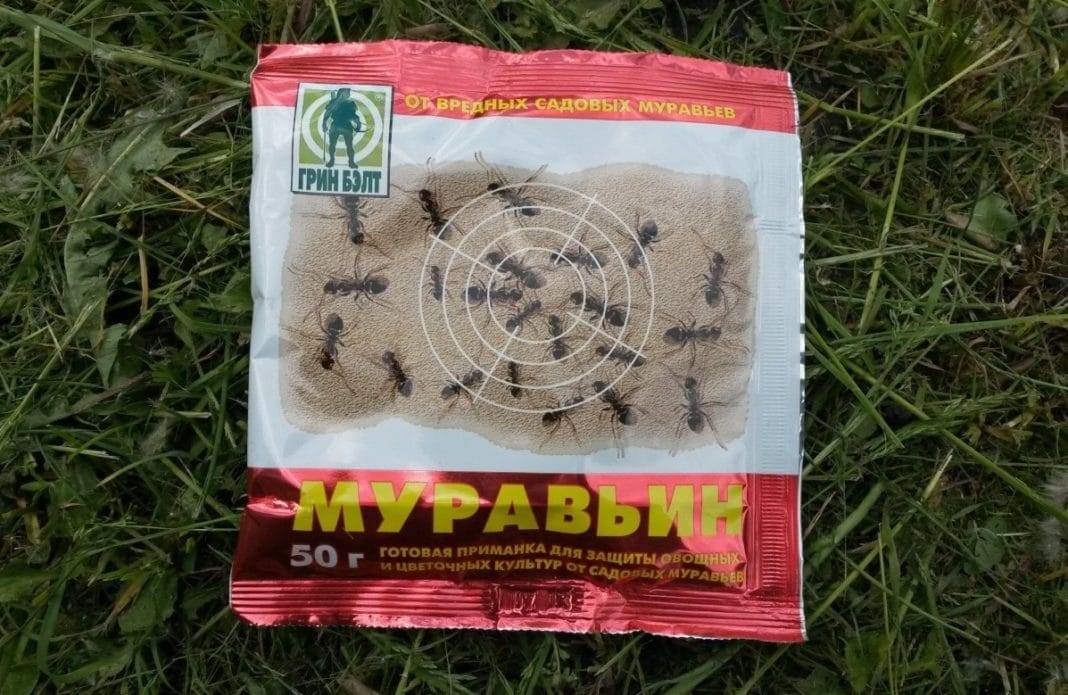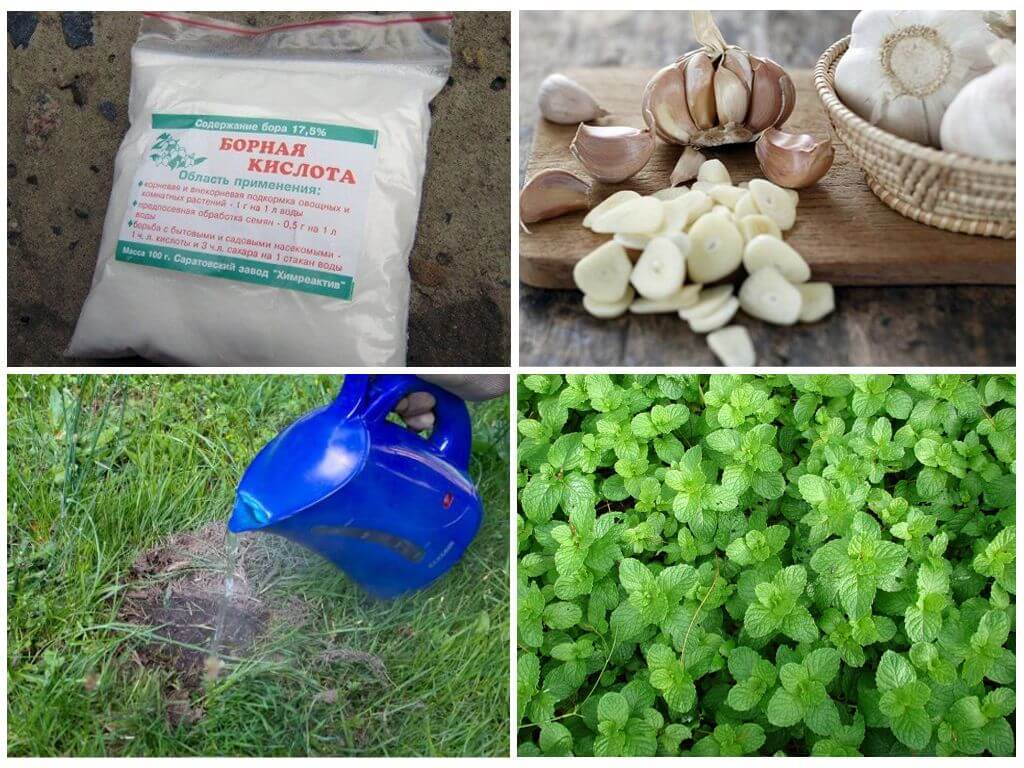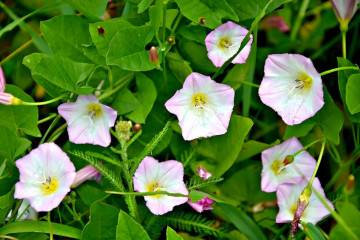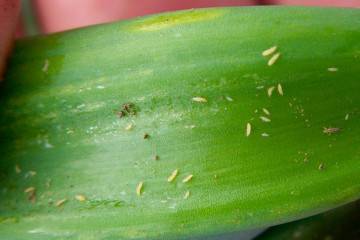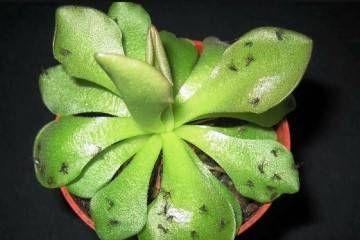Ants on peonies - how to get rid of folk and modern methods
Content:
Pest insects can not only negate the efforts of the gardener, but also destroy the entire plant. Pest control has spanned the entire history of soil cultivation. Therefore, there are enough recipes and methods of struggle. How to deal with ants on peonies and buds and how to remove them forever - the answers are outlined below.
Causes of appearance and harm from ants
Any insect that appears on plants can only live in favorable conditions. If the environment is conducive to active development, they have enough food and a place for their life, they actively reproduce.
What types of ants appear on peonies
The common ant is black and dark brown - those who like to feast on sweet drops of peony nectar. These small pests are small in size - 3-4 mm. They live underground, building deep dwellings there.
How peonies attract insects
The sweet tooth ants love to feast on the nectar droplets that give off the flowers. Peonies are no exception. The buds that have not yet blossomed are covered with a sweet film. This is why ants love peonies.
The benefits and harms they do
Some gardeners do not try to remove insects. Ants on the buds of peonies feast on a sweet protective film. When they eat it, the bud opens faster.
But insects don't stop at film alone. In still unopened buds, they can gnaw the petals, which significantly spoils the appearance of flowers. Sometimes, in search of nectar, ants are able to gnaw through entire passages in buds. Damaged flowers can remain unopened and simply dry out in this state. Which often happens with handsome peonies.
Ant control methods
Fighting ants can take more than one season. Before choosing methods of struggle for your summer cottage, you should familiarize yourself with all possible methods. And the main thing is to weigh all the pros and cons.
Chemicals
Refers to drastic measures. Some gardeners believe that this is very harmful to both the plant and the soil. Others say that this is the most reliable way to keep insects away. However, the packaging of any insecticide contains information that the product will rid the flower bed of pests forever.
Chemicals work thoroughly, destroying insects. The result is visible immediately after processing. But here it should be borne in mind that ants reproduce in hundreds and very rapidly. Therefore, the destroyed generation is being replaced by young growth. In addition, the product may lose its properties under the influence of sunlight, or it will simply be washed away by rain.
Advantages of the method:
- quick results;
- high rates of destruction.
Cons of a chemical attack:
- not a long-term result - you will have to do the treatment several times per season;
- the likelihood of toxicity to plants and soil;
- the ability to destroy beneficial insects.
Scarers and traps
These products are less harmful to the environment and are considered safer. But using them does not give quick results, so you have to be patient.
The repellents include special powders, such as, for example, "Antimuravei". It is simply scattered next to the monastery or around bushes with flowers. After a couple of hours, the ants leave their home. But insects will run away not far, they can successfully settle next to other plants or fruit crops.
The traps are specially designed for the size of the ant. Other insects will not be able to get there. There is no guarantee that all the inhabitants of the anthill will purposefully go into the trap, so 100% of the result can be achieved using many of these "traps".
Pros of using:
- safe for other insects;
- harmless to plants and soil.
Minuses:
- Do not give 100% results after the first application.
- Most often, ants simply move a few meters or bypass traps.
- You need to use a large amount.
Folk remedies
Over hundreds of years of soil cultivation, many homemade recipes for ant control have accumulated. Every gardener can find a simple and affordable way.
Repeller:
- Garlic, they rub the shoots and peduncles of peonies. You will have to process it often, as the garlic wears out quickly.
- Ash, sprinkled with it around the bushes.
- Tobacco or tobacco dust is not tolerated by ants. It is also used as a repeller in habitats and around flowers.
- Soap or detergent. A small amount of the detergent is diluted in water and the buds are sprayed with this solution.
Insects leave their habitat from such drugs:
- Citric acid or vinegar. It is enough to dilute them with water and pour on the anthill.
- Ammonia. Alcohol is diluted in water 1:10. You can get rid of ants by pouring a solution on the anthill, or by spraying greens and peony buds.
- Infusion of garlic. The head of minced garlic is mixed with a liter of warm water and infused for several hours (it is better to leave it overnight). The infusion is filtered and watered with an anthill.
- A mixture of soda lime and ash. It is enough to dig up the area where the anthill is located and sprinkle fresh soil with a deterrent mixture.
Destruction methods:
- Boric acid. This bait is placed next to the anthill in a flat dish. A teaspoon of boric acid dissolves in 6 tablespoons of warm water - the poison is ready. To lure insects, you need to sweeten the solution with sugar, honey or jam. Such a dose does not kill insects immediately, they manage to bring sweets to the larvae with the uterus.
- Live yeast. The soft yeast is mixed with water (not hot) and sugar. The liquid is placed in saucers around the nests. Caring ants will take the treat deep into the nest, where the yeast will ferment and spoil all food supplies for the larvae.
- Millet. There are several versions of why the ants die from millet. First of all, the grains clog the passages into the anthill immediately or over time, when they swell from moisture. The second version is that the birds fly in to feast on grains and at the same time peck at the anthill.
- Boiling water. Pour boiling water directly onto the anthill. The method is effective and quick, but does not guarantee complete destruction, since the anthill is deep.
Pros of folk methods for getting rid of ants:
- absolute environmental friendliness;
- cheapness of many methods;
- means move insects for a long time.
There are also disadvantages:
- Many deterrents are easily washed away by rain.
- When using baits, you need to update them frequently.
Choosing traditional methods of fighting ants, it is best to use a set of measures. With the beginning of spring, peonies can be treated with soldering solutions.In the middle of summer, fight anthills with baits. And in the fall, dig up a site with ash or fragrant vegetable oil.
Destruction of the uterus in the anthill
Ants live in huge colonies. One part refers to the working people. Another is engaged in breeding offspring and protecting the uterus. It is the womb that drives this huge machine. After her death, the entire colony is destroyed, some of the ants die, some leave. To get to the uterus, you have to dig, the average depth of the anthill is 1 meter.
When digging up an anthill, you should immediately acquire methods of dealing with the control center:
- Spill boiling water over the excavation.
- Add aromatic vegetable oil to the dug soil, you can mix it with aniseed or clove. Ants cannot stand this smell.
- Mix the dug earth with ash.
Digging is considered an effective method, especially if you use ash. And the ants will leave, and the soil will receive a charge of nutrition.
Advantages of the method:
- when the uterus is destroyed - 100% result;
- fertilization of the soil.
Minuses:
- There may be many anthills, and deep digging will not only spoil the decorativeness of the flower garden, but also disrupt the root system of flowers.
- You may never find the bottom of the anthill and the uterus.
Prevention of the appearance of ants
Ants don't like the smell of parsley, tansy, marigolds, or mint. Fragrant crops planted next to the peony bushes will not let the ant pass. You can make fragrant plantings around the entire perimeter of the flower bed to protect not only peonies, but also other sweet flowers.
The autumn digging of a flower garden with ash will fertilize the soil and make sure that the ants do not build their houses on this site in the coming season.
If ants appeared on peonies, how to get rid of it quickly, safely, with benefits for the soil and plants is not an easy question. However, with such an arsenal of ways to fight ants, every gardener will be able to evict harmful neighbors from his flower garden. And peonies will delight, as always, with their fragrant and lush flowers.



